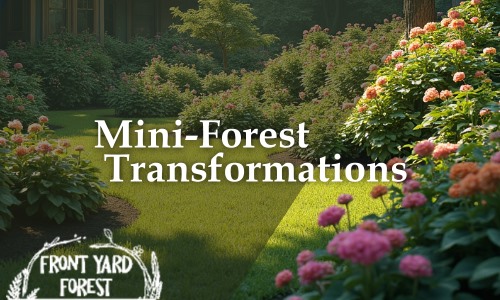Columbia SC Mini-Forest Transformation
Nov 01, 2025Creating a Thriving Mini-Forest in Columbia SC
It’s funny how a simple idea can grow into something that feels alive, literally. In Columbia South Carolina, one homeowner decided their traditional lawn just wasn’t cutting it anymore. They wanted something different, something that could sustain wildlife, bloom through the seasons, and honestly, give them a little peace just stepping outside. What started as a sketch on a notebook became a thriving mini-forest that’s now the talk of the neighborhood.
Why a Mini-Forest?
Honestly, lawns are overrated. I’ve seen them wilt in the heat, need constant watering, and frankly, they just don’t feel alive. Switching to a mini-forest not only makes your yard more interesting but also supports local ecology. Birds, bees, and even small mammals find a safe haven in a well-planned forest garden. Plus, there’s something almost magical about watching a yard change through the seasons in ways a plain grass patch never could.
Planning the Transformation
Before planting, our homeowner did a little homework. Soil testing, sun and shade mapping, and researching native plants were all part of the process. It’s tempting to grab whatever looks pretty at the garden center, but native species like Carolina Jessamine, Eastern Redbud, and Oakleaf Hydrangea thrive without much fuss. The thing is, planning a mini-forest isn’t about strict rules; it’s about layering textures and colors so that every glance outside feels like a discovery.
Layers of Life
Mini-forests are all about layers. Here’s how the Columbia SC yard came together:
- Canopy Layer: Mature trees such as Live Oak and Red Maple create structure and shade.
- Shrub Layer: Hollies, Viburnums, and Azaleas fill in the middle, providing color and shelter for birds.
- Ground Layer: Native ferns, Hostas, and mossy patches cover the soil, keeping it cool and moist.
- Seasonal Accents: Perennials like Black-eyed Susans and Coneflowers bring bright pops throughout the year.
Water and Soil Considerations
Watering in a mini-forest isn’t about constant sprinklers. It’s about smart irrigation and mulching. Mulch retains moisture, reduces weeds, and slowly enriches the soil. Native plants are tough cookies—they don’t need much pampering—but young trees and shrubs benefit from consistent hydration until established.
Wildlife and Biodiversity
One of the most rewarding aspects has been watching wildlife move in. Cardinals dart among the branches, bees buzz through flowering shrubs, and even the occasional fox strolls by at dusk. It’s a micro-ecosystem, and while it’s tempting to try to control everything, letting nature do its thing creates a balance that’s kind of magical.
Seasonal Interest
Forget a yard that only looks good in spring. A thoughtfully planned mini-forest changes color with the seasons. Maples glow red in fall, hollies keep their berries through winter, and spring blooms signal the start of new life. Honestly, it’s a yard that keeps you noticing, keeps you present, which is rare in our always-on digital world.
Maintenance Tips
Even the most natural-looking mini-forest needs some TLC:
- Prune selectively to maintain shape and remove deadwood.
- Monitor for invasive species or aggressive weeds.
- Top up mulch yearly to nourish soil.
- Plant companion species to support beneficial insects.
It’s not high-maintenance, just mindful maintenance. The effort pays off in a vibrant, dynamic landscape that feels alive year-round.
Final Thoughts
Transforming a yard into a mini-forest isn’t just about plants. It’s about creating a space that encourages exploration, invites wildlife, and changes the way you experience your outdoor area. In Columbia SC, it’s inspiring neighbors, changing local landscaping expectations, and most importantly, providing a quiet refuge for the homeowner. If you’re tired of a conventional lawn, a mini-forest might just be the change your yard—and your mind—needs.
